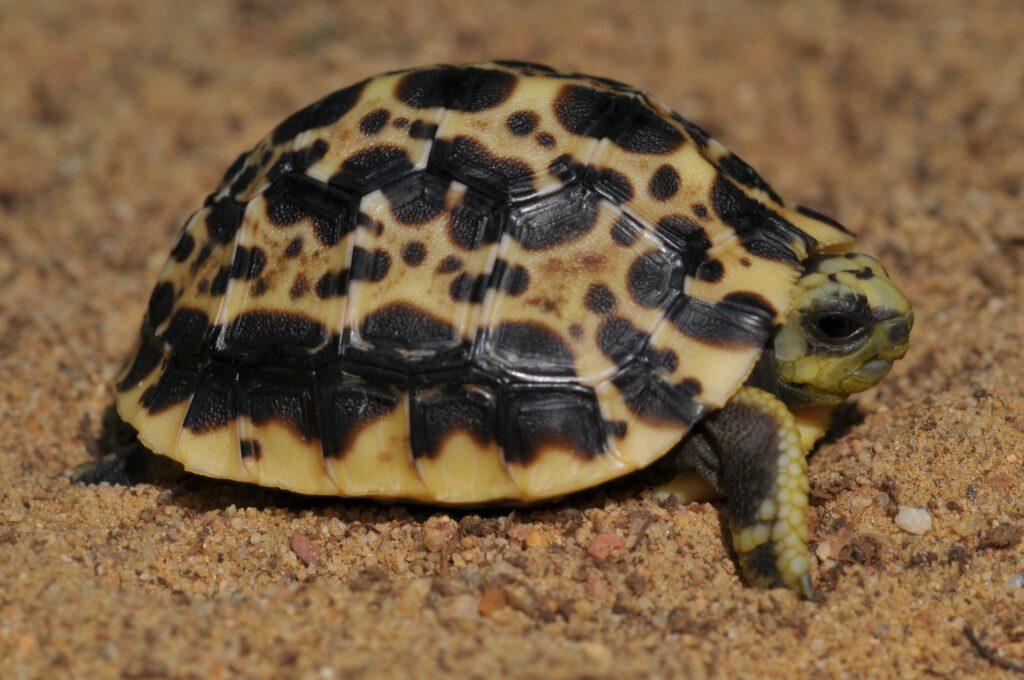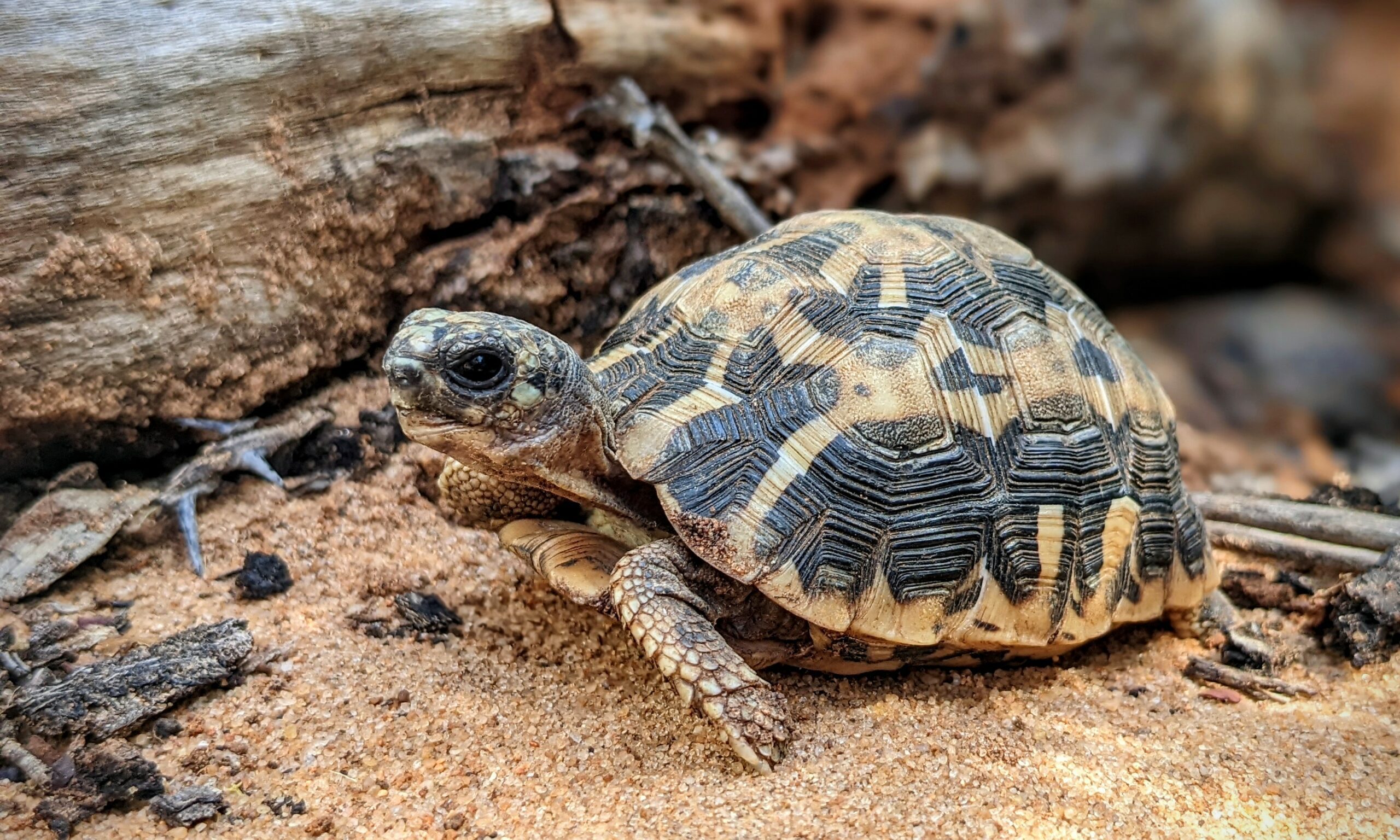Meet the small but strapping Spider Tortoise!
This little tortoise is native to the southern extremes of Madagascar. With its black and straw-yellow carapace, it bears similarities to a fellow Malagasy species—one that it often shares habitat with—the Radiated Tortoise. This compact chelonian is distinguished from its much larger counterpart by its petite size and its shell pattern named for the web-like striations.
There are three subspecies of Spider Tortoise: Northern, Southern, and Common. The Common and Southern subspecies can be distinguished by the range in mobility of the hinge on the front lobe of the plastron, which acts as a defense mechanism, while the Northern subspecies lacks a hinge altogether.

These little tortoises, depending on sex, grow an average of 4.5 – 5 inches, with the Northern variation being the smallest overall.
The Spider Tortoise faces similar threats to the Radiated Tortoise, including poaching for domestic bushmeat food markets, the international pet trade, and habitat loss. Interestingly, this tortoise is often caught by poachers as “bycatch” when they are searching for Radiated Tortoises.
We work to protect this species through our confiscation, treatment and rehabilitation, captive breeding, and reintroduction work in Madagascar.
- Pictured: Spider Tortoise (Pyxis arachnoides)
- Countries of Origin: Madagascar
- Habitat: Dense coastal dry forests, xeric spiny forests, and sandy coastal scrub
- Wild Population: Declining
- IUCN Red List Status: Critically Endangered
- Threats: Poaching for domestic bushmeat food markets and the international pet trade; habitat loss
Header image courtesy of Lance Paden.
